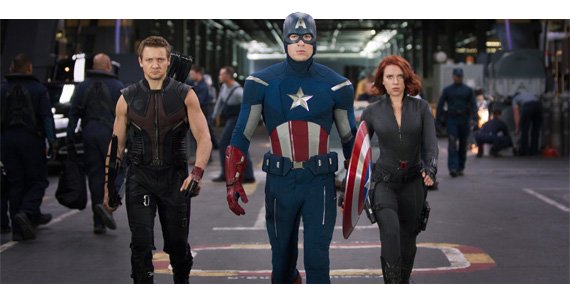
As the fight coordinator on movies like 300 and The Bourne Identity, Jonathan Eusebio's work packs a punch. Stunning choreography and well-trained actors are the trademarks of movies that include Eusebio's name in the credit scroll. Passionate and well-versed in moviemaking, Eusebio knows what it takes to make a fight scene exciting, emotional and fun to watch.
His early love of Jackie Chan and Sammo Hung movies influences the way he sees fight sequences. His background in martial arts helps him to keep one foot in reality while still embracing the no-contact camera-magic combat of the film industry.
We chatted with Canadian-born Jonathan Eusebio to get the low-down on the fight coordinating for the The Avengers. He had a lot to say about the training, the actors and bringing his own touch to the film.
Jonathan Eusebio: We're in charge of the design and choreography of the sequences. We also train the actors and are involved in the pre-visualization of fight scenes.
We're involved with the prep and the shooting.
I've worked on The Bourne Trilogy, 300, Iron Man 2, Conan The Barbarian and a number of others.
I grew up doing a bunch of different things. I was an instructor in Filipino martial arts like Muay Thai, and Savate, which is a French form of kickboxing. I've also done a lot of shoot wrestling, which is a form of MMA in Japan.
I got lucky in a sense that for the movies I've worked on, all the actors had done a lot of action movies. They really understood how movie fighting and real fighting are different.
They had a good sense of performance when it came to understanding camera angles and stuff like that.

Most action heroes walk in slow-mo; these guys are so awesome, they walk in freeze-frame.
and real fighting?
In movie fighting, you have to rely on camera angles. All of your movements have to be over-exaggerated and really wide. In real fighting, everything's really tight and fast.
You don't want to telegraph a punch in real life, but for movies, you almost have to over-exaggerate so the camera can see it and other actors can see it.
You have to retain the essence of body mechanics to what's real, but you have to adjust for cinema.
There's good and bad to using multiple takes. You can always stop and re-do a sequence, but that means you can be filming a fight scene for 8-10 hours.
A real fight only lasts 5-or-10 minutes. The actors have to work really, really long and really hard.
The thing with that movie is we trained those guys for 3-or-4 months prior to filming, so they were already in really good shape when we started filming. But still, when we're on set, the actors need to adapt to any changes in choreography and be ready to go for long periods of time.
bring to a role?
He's a very creative guy who's in good shape; I don't think the general public knows that. He trains martial arts, especially for action movies.
Unfortunately for Avengers, he's not actually in the suit; Iron Man is more of a stuntman. He's in the suit sometimes, but for the majority of fights I was dealing mostly with stunt people.
He brings up a lot of good, creative points which I have to utilize when I'm creating stuff for Iron Man.

Iron Man: He just got done whooping Mega Man's @ss.
Yeah. I think all of them brought something to the table in terms of how they're going to move and what motivates their character to do what they do.
For me, as a choreographer or coordinator, I have to see how they move, and what makes their movements believable, and then choreograph around their strengths.
The special effects, depending on what they are, only enhance what the actors are doing. When you see the actors doing stuff, there are no special effects in terms of what they're doing. They're doing it.
They might interact with special effect elements, but these guys are 100 percent doing everything physically.
In order to get the actors to do what we want them to, they have to be in shape. We spend a good month, even before fight training, getting them in shape.
If they have the time, some actors will do both fighting and physical training at the same time. If you haven't been doing anything physical for a year, you can imagine how hard that is on the body.
I think I was fortunate enough that these guys were in shape from their prior movies, so it was just a matter of them coming in and training specifically for what I choreograph for them.
In terms of what we do with training necessities, it's just like anything else: you have to train what complements what you're going to perform. We incorporate a lot of footwork and technical stances.
Exactly. Of course actors have to look a certain way, so they need to get their bodies sculpted correctly. But in my experience, because we do a lot of these choreographed action movies, we usually work in conjunction with a trainer and their training complements what we're trying to do.
The actors need to train for specific movements, just like an athlete.
